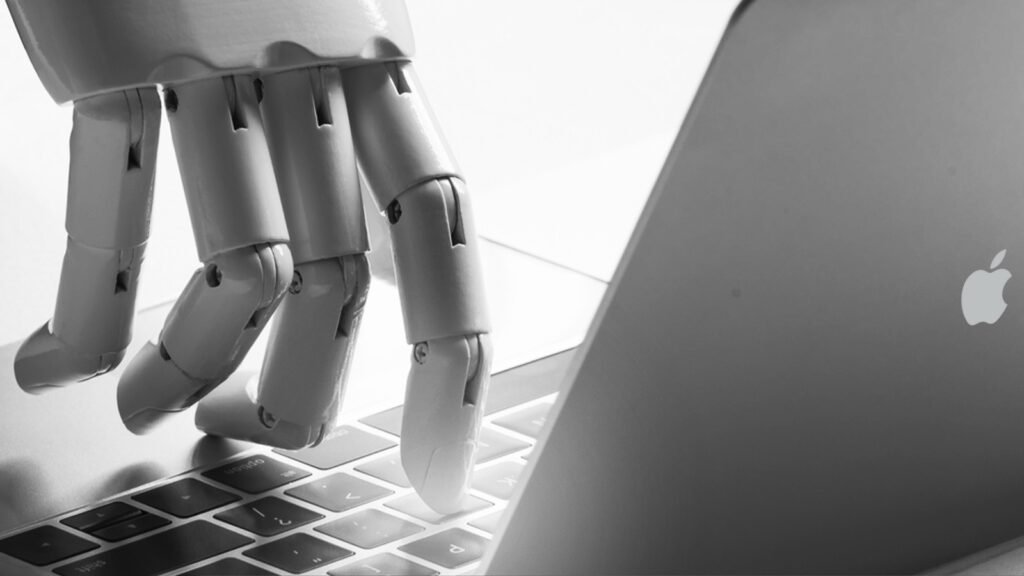Four decades after sparking a revolution in personal computing, Apple’s Mac remains robust, poised for new heights with AI computing, or possibly trailing behind.
Launched in 1984 with a groundbreaking ad challenging a dystopian future, the Macintosh, or Mac, gained popularity for its user-friendly features like a graphical interface, clickable icons, and a mouse.
Olivier Blanchard, research director at Futurum Group, emphasized the immense impact of the Mac, stating, “Every laptop and PC has sought to replicate the Mac and its success.” The Mac became the favored choice for Apple enthusiasts, as well as artists, filmmakers, and other creatives.
While Windows-powered computers have traditionally dominated business workplaces due to their cost-effectiveness and compatibility with widely used productivity tools like Microsoft’s databases or spreadsheets, Apple has been gradually gaining ground in the business sector.
The surge in iPhone usage for work-related tasks and increased Mac compatibility with workplace applications have contributed to Apple’s growing presence in business settings.
According to Dag Spicer, senior curator at the Silicon Valley Computer History Museum, the Mac’s market has expanded to include a diverse user base, and Apple’s marketing often emphasizes a sense of uniqueness and rebellion.
The upcoming release of Apple’s “spatial computing” headgear, the Vision Pro, is geared towards work-related uses, highlighting its compatibility with the Mac. Creative Strategies analyst Carolina Milanesi notes Apple’s concerted efforts to enter the enterprise space with products like Vision Pro, especially emphasizing its connection with the Mac.
The Mac’s 40th anniversary coincides with a decline in the global PC market due to the increasing prevalence of smartphone-centric lifestyles.
The PC market is experiencing a revitalization driven by remote work trends and a growing interest in upgrading to machines optimized for AI computing, as highlighted by analysts. For years, the PC market witnessed incremental improvements that lacked appeal for users seeking reasons to upgrade, according to Blanchard.
He sees AI as a transformative force in the PC market, predicting a shift toward more powerful and user-friendly PCs with on-device generative AI capabilities.
This change is compared to having a team of experts readily available on the computer for various tasks. The utilization of data for AI purposes will remain on PCs, ensuring security and cost savings compared to cloud computing.
Blanchard anticipates a surge in PCs equipped to handle AI workloads on devices, capitalizing on a popular trend. Apple has already entered this space by designing its own custom chips, according to analysts, challenging the perception that Apple may not be actively involved in generative AI. Despite appearing to trail in the AI race, Apple likely has plans to introduce its own computer chip for “AI Macs,” leveraging its success in integrating AI into various features like the camera and Siri.
The overall PC market, including Apple’s share, is expected to grow, even with Apple’s high-end pricing. Milanesi asserts that Apple has more opportunities in this market than commonly acknowledged, pointing to the potential for significant advancements in the AI-driven computing landscape.
Analysts predict that when an AI Mac is introduced, it will likely be integrated into Apple’s ecosystem, allowing the company to maintain control over user experiences and generate revenue from its offerings.
The success of Apple’s foray into the AI Mac market will be crucial for the company’s standing, with Blanchard suggesting that if the Mac does not embrace AI within the next year, Apple may face challenging inquiries.
He emphasizes that AI has become pervasive in various aspects of technology and business, making it an essential component that Apple cannot afford to overlook.


